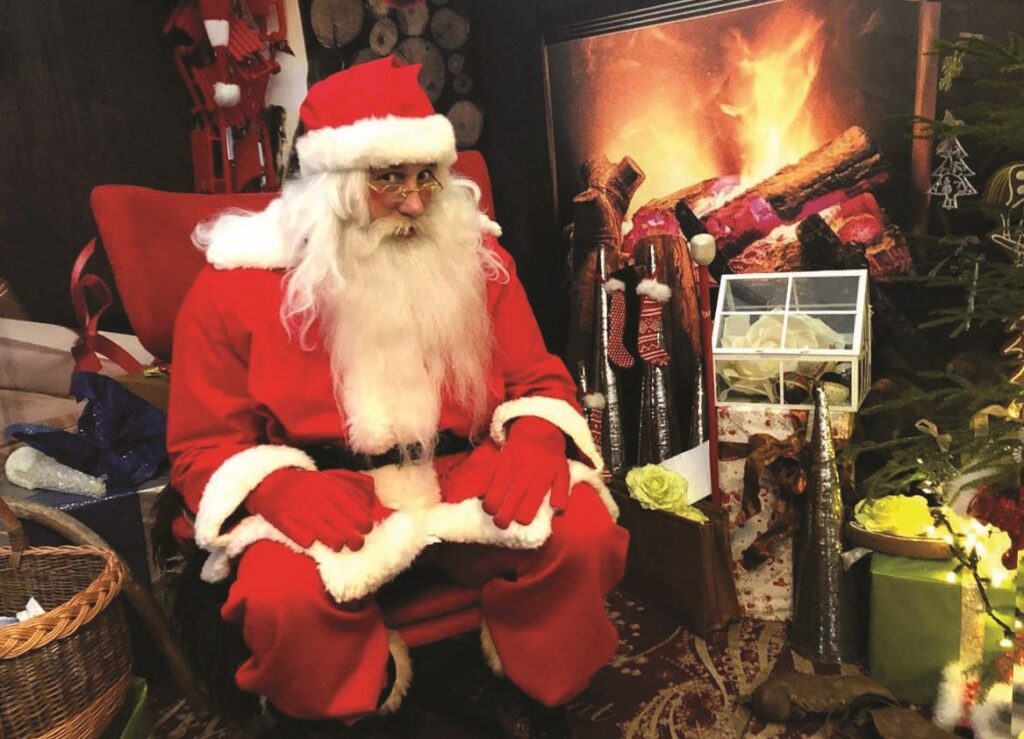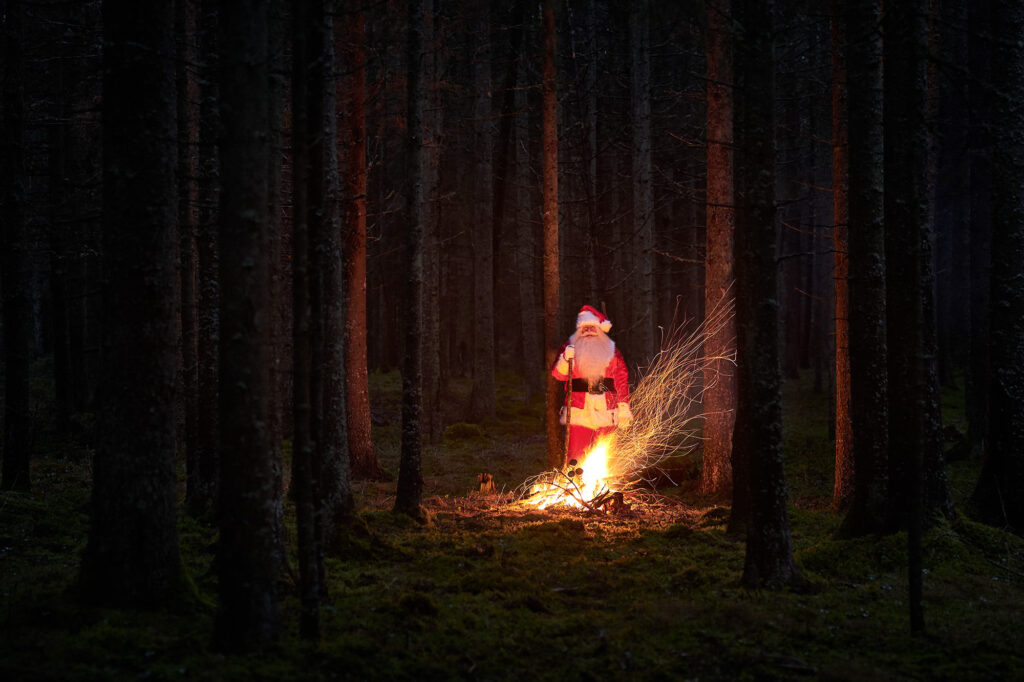Santa is Santa no matter the nationality, right? In the case of the Estonian Santa Claus, the answer is yes and no.*
Santa Claus comes in many different forms. There is the seasoned mechanical engineer, unceremoniously displaced from a lucrative career by a recent college graduate, working part-time at the shopping mall in December. Clad in red velvet and white trim, he poses as Santa to make ends meet while children present their material wishes on his lap.
There is the white-bearded heavy-set guy that works at the local bar, who is surely the real Santa’s doppelganger. There is the Hollywood version of Santa, who fills our screens with a giant belly, rosy cheeks and hearty ho-ho-hos.
Then, there is the Estonian Santa Claus
Jõuluvana, as he is known in the native tongue, roughly translates to old (vana) Christmas (jõulud). However, astute linguists will note the name Christ does not appear in the Estonian word for Christmas. That’s because the Estonian word, jõulud, is actually based on the ancient word yule or jul – as it is in many Scandinavian countries. Call it a hint of a pagan past hidden in a modern pious holiday reincarnation. So, Old Yule is a more literal translation for jõuluvana.
Santas, no matter their ethnicity, have many things in common. They are old men, often with bulging waistlines. They commute to work on a flying reindeer powered sleigh. Their wardrobe could use some variety. In a service to the community, Santas hire vertically challenged individuals with deformed ears to work in the shop.
Now, you ask, how does the Estonian Santa Claus differ from all the rest? For one, he does not deliver his bounty of Chinese manufactured trinkets and playthings in the middle of the night while the kids are sleeping – in anticipation of Christmas morning – as he does in the United States and elsewhere.
No, as the tradition goes, he actually knocks on the front door more like a Chinese food delivery man. For in the Estonian Christmas, gifts are opened Christmas Eve. But he’s not looking for euros like a delivery man would. Rather, he expects song and dance in return for the perfectly wrapped boxes. Jõuluvana dangles presents, and the recipients make fools of themselves. Everybody wins.

But, although we are beginning to distinguish the Estonian Santa Claus from the pack, the rather comical Christmas Eve delivery is not entirely unique to Estonians. Many Scandinavians practice the same custom. So, if that’s not the unique identifier of jõuluvana, what is?
Jõuluvana speaks in a Finno-Ugric tongue
Certainly, language is key. Jõuluvana speaks in a Finno-Ugric tongue, familiar only to a small percentage of Santa believers. In the dialect, ho-ho-ho may sounds a bit more like hoh-hoh-hoh. Gifts? That’s so Indo-European. No, jõuluvana delivers kingitused. Often, on this night the language might be a bit jollier and excited too, mainly in response to a few nips from a bottle of spirits – it is Christmas Eve after all.
In keeping with Estonian character traits, jõuluvana enjoys the sauna. Whether or not he wears the red suit while whipping himself with birch branches, only Mrs Claus knows. While away from the North Pole, he checks in with the elves using Skype. He e-votes for parliament and files his taxes online. And please don’t leave him cookies and milk – he prefers Saku beer and marinated herring on black rye bread (for extra points, sprinkle some dill).

But the Estonian Santa Claus is based on personal experiences too. My childhood memories of Santa during the Christmas pageant at the Estonian School involve jolly old men that strangely looked and sounded like some of my parent’s friends and who curiously were not in the audience at the same time.
Usually, these same individuals would reappear after the Christmas play… Coincidence? I don’t know. But I know jõuluvana never missed a Christmas at my house when I was growing up, and for that I thank my parents; er, I mean Old Yule.
Häid jõule kõigile! (Merry Christmas to all!)
Cover: Santa Claus in the wintry Estonian forest. Photo by Kaupo Kikkas. * Please note that this article was originally published on 23 December 2014 and lightly edited on 23 December 2021.


“And please don’t leave him cookies and milk – he prefers Saku beer and marinated herring on black rye bread (for extra points, sprinkle some dill).” I love this!
My mother was born and raised in Estonia. I grew up in New Jersey, and friends of our family just didn’t understand our love of dill, and hazelnuts for that matter.
Can never have enough dill!
Absolutely got to have dill. Our garden at the cottage was full of it. The store bought stuff in Toronto does not taste the saame.
Funny- that was always what my dad said: “I think ‘Santa’ would rather have a cold beer.”
Täpselt 🙂
I can agree with this one, but I must add one thing. At least for me as an Estonian, Jõuluvana lives in Lapland 😀 However, it is understandable that the North Pole version in more known to people 🙂
Yes, exactly. As far as jõuluvana’s home, North Pole sounds new and alien to me. He is well known to live in Rovaniemi, Lapland, Finland:)
And he drives a Swedish car: SAAB 92
Yup sounds like the real tradition – Oskaer1
My memory of him also having to sing a song or recite a poem to receive a gift. We did this at church a week before Christmas so I did not connect him with Christmas Of course if your parents did not give Jouluvana a present you would not get one.
That fact I learned at an older age.
Instead of “Ho ho ho”, the first thing that Jõuluvana would say is “Are there any good children in this house?” because only good children are worthy of presents. One time my little brother made everyone promise not to rat him out so he could still get presents 😀